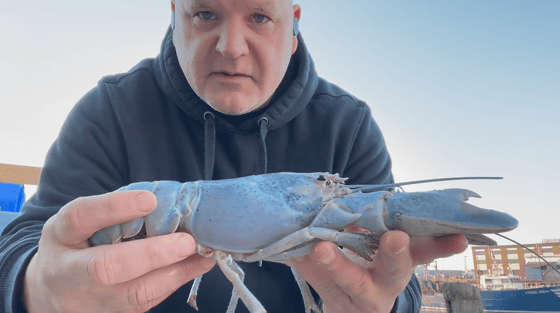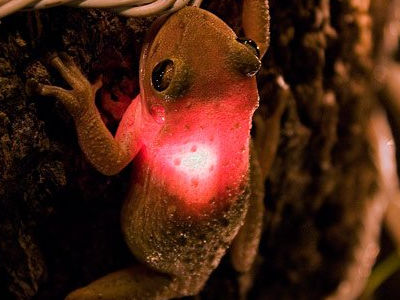Find 'shining blue lobster'

On November 5, 2021, a lobster with a deep blue mottled shell was withdrawn in Maine, USA. The deep blue lobster is quite rare, so I decided to go to the science museum.
The Rare Cotton Candy Lobster – Get Maine Lobster
Rare'cotton candy' lobster was a 1-in-100 million catch | Live Science
https://www.livescience.com/cotton-candy-lobster-haddie-caught-in-maine
The lobster in question was repatriated on November 5, 2021 by lobster fisherman Bill Coppersmith, who works in Casco Bay in the south of Maine. The video is below.
Cotton Candy Lobster on Vimeo
It's not Mr. Coppersmith, but Mr. Mark Murrell, CEO of Get Maine Lobster, a lobster distributor who has a contract with him.

It looks like it was placed on the ground. The color is described as 'Cotton Candy' in overseas reports, because cotton candy is sold in pink or sky blue in the United States.

According to Murrell, Coppersmith and his colleagues were very excited when they pulled up the lobster in question, and Coppersmith gave the lobster the same name as his granddaughter, 'Haddie.'
The body color of lobster is determined by the action of a pigment substance called 'astaxanthin, ' which is a type of carotenoid similar to β-carotene and lycopene. Astaxanthin itself is a red molecule, but when it binds to a protein, the shape of the molecule itself is greatly twisted and it reflects and absorbs light of a specific wavelength, turning blue or yellow. The reason why crustaceans such as lobster turn bright red when boiled is that the protein bound to astaxanthin is denatured and separated by heating, so that the original red color of astaxanthin is exhibited.
According to media reports, the lobster in question may have eaten fish as its staple food, rather than crabs, shrimp and other astaxanthin-rich organisms. Since the staple food was fish, the content of astaxanthin in the body was low, and it is thought that this color was obtained as a result of the small amount of astaxanthin remaining binding to the protein that turns blue.
Mr. Murrell used the expression '1 in 100 million' for this lobster, but in reality it is quite rare, but it is sometimes withdrawn. In fact, in 2017, a bright blue individual, which is described as sky blue, was withdrawn.
View this post on Instagram
The lobster named Haddie by Mr. Coppersmith was responded to the offer 'I definitely want to protect it because it is beautiful' at the Seacoast Science Center, a science museum in New Hampshire. 'We decided to donate lobsters in unusual shades because they are easy for predators to find. She will be able to live safely with other lobsters at the Seacoast Science Center.'
Related Posts:
in Creature, Posted by darkhorse_log







